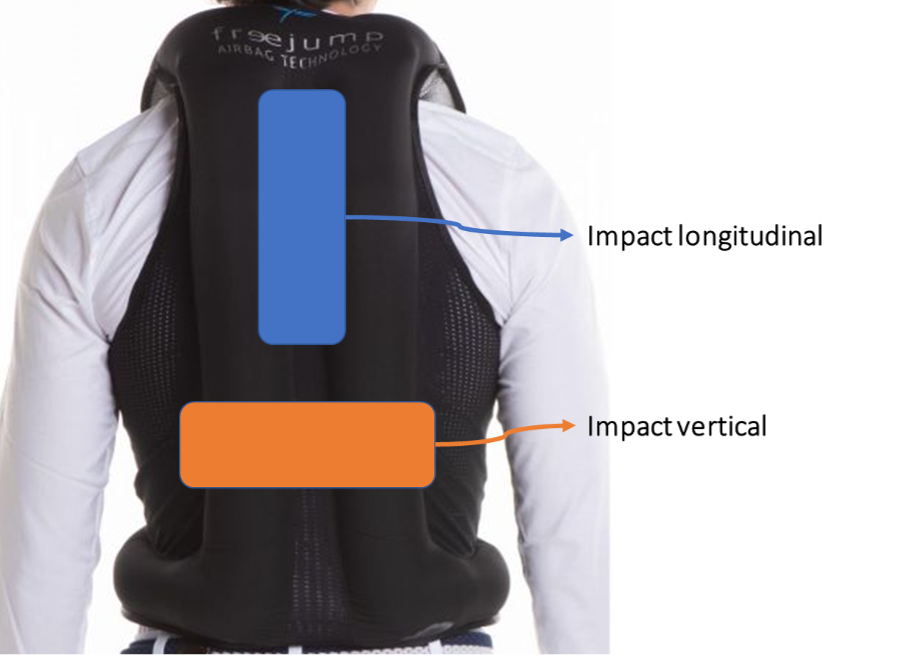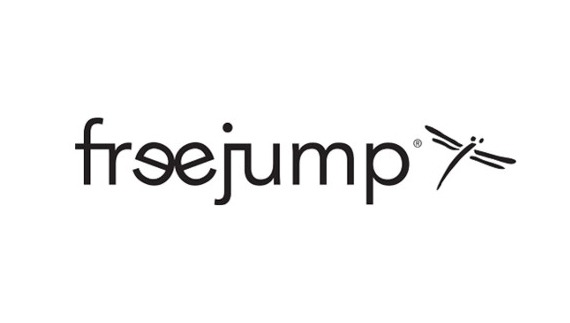Airbag vests are personal protective equipment (PPE). They appeared in the late 1990s in Japan. These vests, marketed by the company Hit Air and distributed in France by the company Hélite, were initially intended for motorcyclists.
Hélite very quickly developed its own vests and then at the request of the English company Point two, they were adapted to meet the needs of horse riding at the end of the 2010s. This is how for almost 15 years, riding airbags were simple slightly adapted motorcycle’s airbags, worn over clothing, like a lifejacket.
The birth of Freejump airbags
In 2016, the Oscar&Gabrielle company sought to develop a riding competition jacket that could incorporate an airbag. It then approaches Hélite and uses Zip’In technology, thus marketing the first riding jacket concealing an Airbag. Other manufacturers will take up this principle of integrated airbags.
In 2019, Freejump took over Oscar&Gabrielle and thus continued the project to develop an airbag vest conceived and designed exclusively to meet the needs of riders, leaving aside the world of motorcycling.
This airbag vest was developed in collaboration with Martin Fuchs. Martin won the Grand Prix of Lyon in October 2019 with the first prototype, then Geneva and London 2 months later, ensuring his notoriety.
The selling of this first 100% horse-riding Freejump airbag vest started at the Jumping de Bordeaux on February 6th 2020.
Convinced that this airbag vest could still be optimized technically and aesthetically, Freejump continued its R&D efforts and adapted to the new French safety standard thought for Equestrian Airbags, which was in the making for several years.
This new 100% Freejump airbag vest is the first one to have been certified according to this new standard in June 2021. It is the fastest on the market, equipped with a patented rearming system simplifying its use for riders. This technology is available with Freejump and also the Penelope Airlight model.
Since the distribution of these new products started, Freejump has been continuing its R&D efforts, with the sole objective of revolutionizing the protection market once again. »
The NF S-72-800-2022 standard and the higher requirements of Freejump
Since May 2021, the French certifying body (Alienor Certification) and the Certified Testing Laboratory (CRITT) have referred to this new NF standard and its requirements to issue its certifications for new equestrian airbags vests. The arrival of this standard coincided with the launch of the new 100% made by Freejump airbag vest. This 2nd generation of Freejump airbags vests were the first to confront the new standard and above all the first to satisfy it.
The NF S-72-800-2022 standard, published in early 2022, is currently continuing a process of European harmonization.
Pending this process of European harmonization, riding airbags are certified by experts. In other words, independently in each country, certified organizations can determine their own requirements according to their perceptions of good protection.
The internal market of the European Union implies the free movement of goods across the borders of its member countries. It is by virtue of this regulation that very different airbags can be found all over Europe. Indeed, the volumes of protection as well as the inflation times vary from one airbag to another depending on the country in which they were certified.
Eventually, all airbags certified in Europe will have to meet this new standard.
The main requirements of this new NF-72-800-2022 standard concern:
- The coverage areas, now larger, depending in particular on the chest circumference and the height of the bust. These measurements make it possible to precisely adapt the size of the airbag to the morphology of the rider.
- The triggering speed, ensuring 100% inflation of the airbag before impact. This speed now implies a minimum height of the horse (a small horse requires a minimum inflation time faster than for a large horse because the impact on the ground occurs more quickly).
- More demanding impact tests.
The NF-S-72-800-2022 standard imposes horizontal impact tests (orange on the diagram), the Freejump vest goes beyond the standard by also integrating a longitudinal impact (blue on the diagram) . This test represents a common and dangerous fall in horse riding: the impact of an obstacle bar, between the airbag flanges. The current standard therefore imposes protection during a horizontal impact, the Freejump vest meets both the horizontal and longitudinal impact tests.
This protection implies bulkier flanges in the back and at the level of the thorax. The Freejump and Penelope vests therefore offer a level of protection superior to the requirements of the S-72-800-2022 Standard.
Advices before buying an airbag
- Check the concordance between the size of the airbag and your chest circumference. Vests offering low protection are easily identifiable. Indeed, the larger sizes of some manufacturers (eg XL) are approved for a chest circumference of 95 centimeters maximum. For information, this chest circumference corresponds to a size L at Freejump, while for an XXL we offer up to 105 centimeters of chest circumference.
- Check the minimum required height of the horse. When the technology of an airbag does not allow it to inflate quickly enough, it is common for the manufacturer to restrict its use to large horses.
- Check the length of the cord. A short cord length is symptomatic of a slow inflating airbag. This practice is particularly dangerous, as the risk of accidental triggering while riding is increased.
- Check that the size of the vest is proportional to the volume of its cartridge. If the volume of air required to inflate an XL vest is identical to that required for an XS, this is evidence of a poor management of the volume of protection and/or inflation speed.
- Check weight requirements. It seems logical to adapt the airbag to the weight of its user, for information, Freejump vests for children are the only ones to start at 25 kg (55 Lbs).

